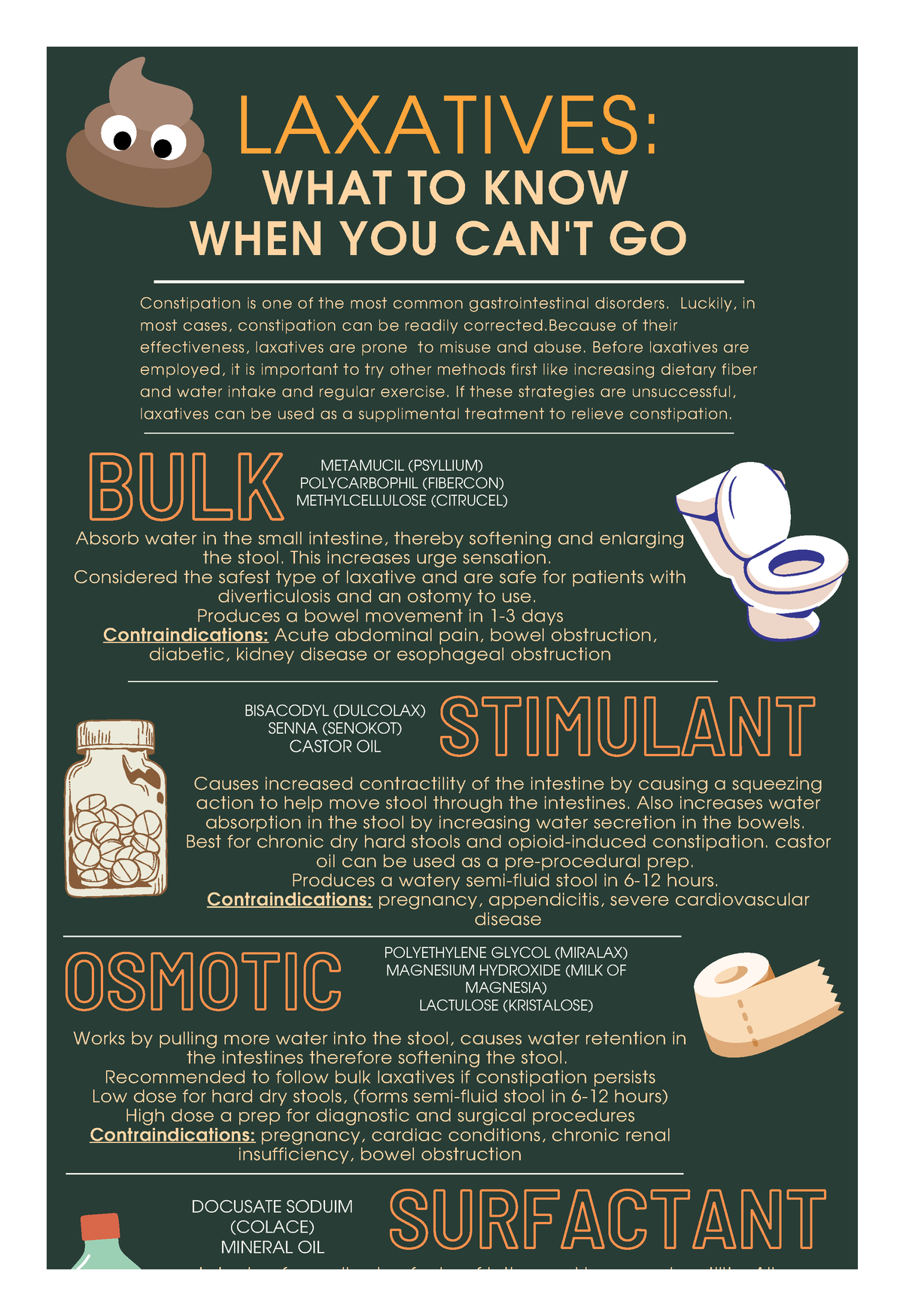According To The American Gastroenterological Association For An Educational Infographic,
Constipation, classified as having infrequent or difficult bowel movements, can be treated with laxatives, which come in different types such as bulk-forming, osmotic, stimulant, and surfactant. According to the American Gastroenterological Association, laxatives should be considered when dealing with constipation related to pregnancy or drug use. A meta-analysis found that osmotic and stimulant laxatives were effective in treating chronic idiopathic constipation. Laxatives are available over-the-counter and come with potential risks. If you are looking for a laxative to relieve constipation, it is important to understand how they work and when to consider each type.
The American Gastroenterological Association provides guidelines on the use of laxatives. Here are the different classifications and their details:
-
Bulk-forming laxatives:
- How they work: These laxatives work by increasing the bulk and water content of the stool, which helps to facilitate bowel movements.
- Examples: Psyllium, Methylcellulose
- When to use: They are useful for patients with low fluid intake or inadequate dietary fiber.
- Contraindications: Contraindicated in patients with intestinal obstruction.
-
Osmotic laxatives:
- How they work: Osmotic laxatives function by drawing water into the bowel, softening the stool, and increasing bowel motility.
- Examples: Magnesium hydroxide, Lactulose, Polyethylene glycol
- When to use: Suitable for patients who need a mild to moderate softening of the stool.
- Contraindications: Should be avoided in patients with renal impairment due to the risk of electrolyte imbalance.
-
Stimulant laxatives:
- How they work: These laxatives promote bowel movements by directly stimulating the nerves in the colon, leading to increased motility.
- Examples: Senna, Bisacodyl, Castor oil
- When to use: Useful for patients with severe constipation or when there is a need for rapid relief.
- Contraindications: Contraindicated in patients with bowel obstruction or inflammatory bowel disease.
-
Surfactant laxatives:
- How they work: Surfactant laxatives work by lowering the surface tension of the stool, allowing water to penetrate it more easily and soften it.
- Examples: Docusate sodium, Docusate calcium
- When to use: Beneficial for patients who need a mild, stool-softening effect.
- Contraindications: Should be used cautiously in individuals with abdominal pain, nausea, or vomiting, as they can mask symptoms of a more serious condition.
Always consult a healthcare professional before starting any laxative regimen, especially if you have any underlying health conditions or are taking other medications.
Sources


Related Questions
Work fast from anywhere
Stay up to date and move work forward with BrutusAI on macOS/iOS/web & android. Download the app today.
